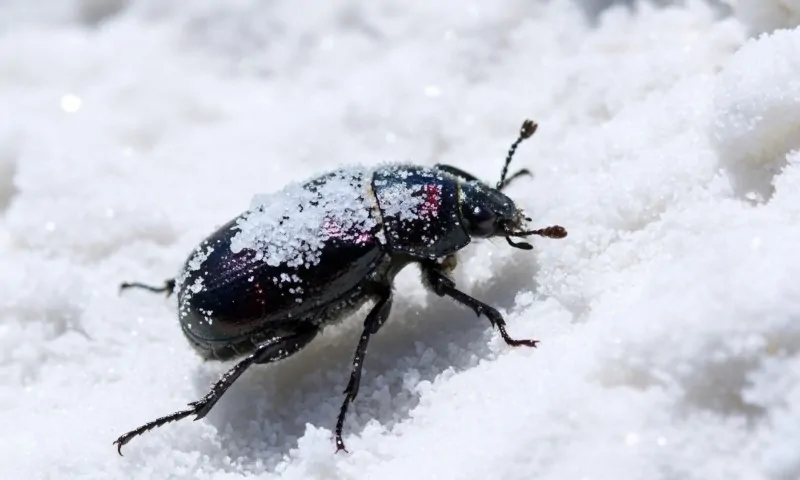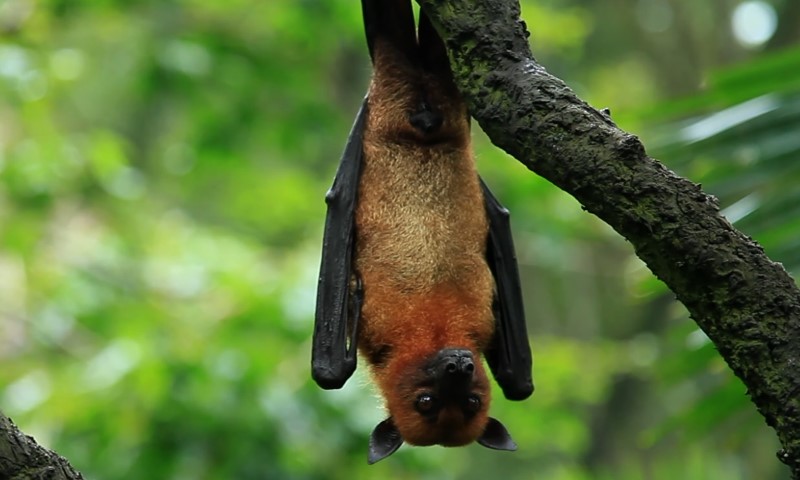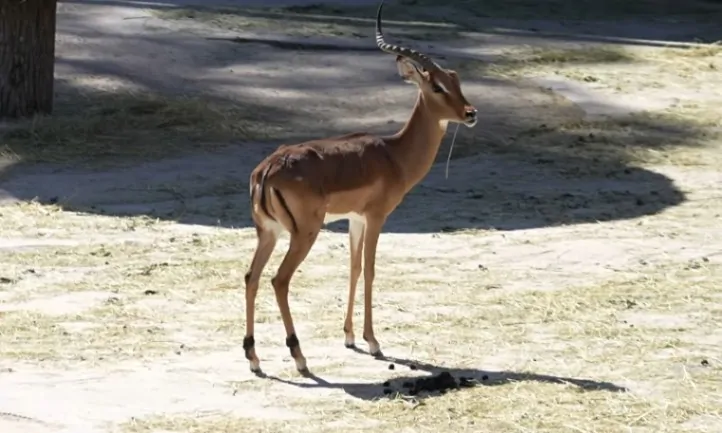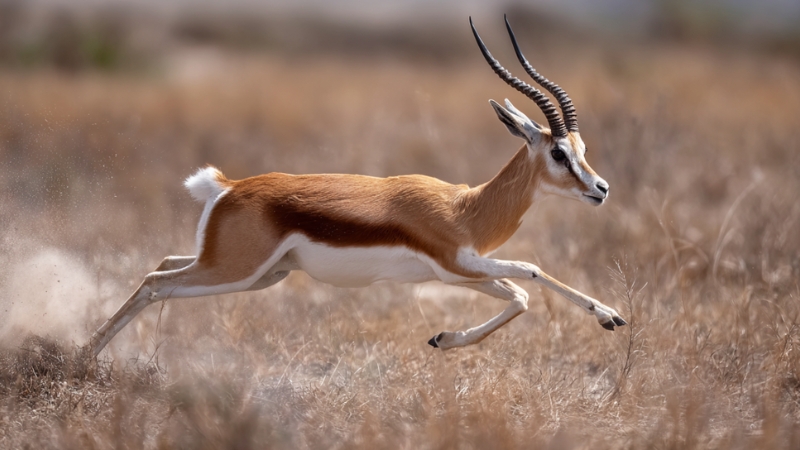Africa’s desert environments span vast, sun-scorched territories like the Sahara, Namib, and Kalahari. These arid zones, characterized by extreme temperatures and minimal rainfall, demand biological ingenuity for any creature hoping to thrive. Among the most resourceful survivors are insects, tiny architects of resilience that shape ecological balance in the harshest terrains.
Insects in these deserts fulfill critical ecological roles. They recycle nutrients, serve as food sources for larger animals, and often showcase bizarre physiological and behavioral strategies. Whether harvesting water through fog condensation or using internal compasses for navigation, their adaptations reveal raw survival prowess.
Cultural and practical relevance also underscores their presence. Many communities have long relied on certain insect species for food, medicine, or symbolism.
Edible insect practices, highlighted by researchers like Springer, continue to gain traction as both traditional sustenance and modern sustainable protein alternatives.
Now, take a closer look at ten bizarre insects dominating Africa’s most unforgiving deserts.
Table of Contents
Toggle1. Camel Spider (Solifugae)
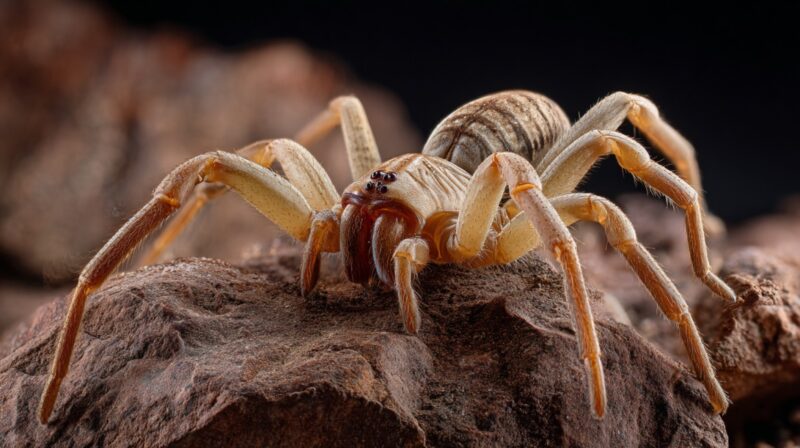
- Region of Origin: Sahara and Arabian deserts
- Size: Up to 15 cm in body length
- Life Duration:: 1–2 years
- Notable Features: Large chelicerae, extreme speed, no venom
- Behavior: Nocturnal predator, burrows for shelter
Sprinting across Saharan dunes with unmatched speed, the camel spider commands fear with its monstrous appearance and relentless movement.
Not a spider and not a scorpion, it lives in a classification all its own, defined by survival instinct, aggression, and remarkable endurance.
Legends exaggerate its capabilities, but facts hold their own weight. Lacking venom, it relies on massive jaw-like appendages to overpower lizards, small rodents, and insects.
Speed becomes a survival strategy as it hunts at night to avoid the desert heat.
Adapted hairs help regulate body temperature and provide tactile awareness in the dark. Though stories about flesh-eating habits persist, most are false. It remains more of a terrifying curiosity than a real threat to humans.
2. Toktokkie Beetle (Tenebrionid Beetle)
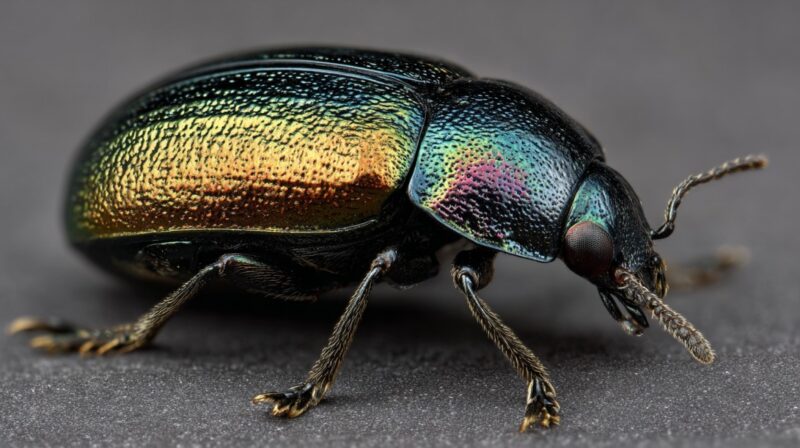
- Region of Origin: Namib Desert
- Size: 1–3 cm
- Life Duration:: 6 months to 1 year
- Notable Features: Fog-harvesting posture, head-tapping
- Behavior: Diurnal, water collector, solitary
In the Namib Desert, the Toktokkie taps messages into the sand like a miniature percussionist. That tapping is a mating call.
Head raised, abdomen lifted, it sends rhythmic pulses that echo through the dunes.
Far more than a romantic, this beetle practices one of nature’s most creative hydration methods.
Climbing dunes during early fog, it collects water droplets on its back, directing them straight to its mouth. This ritual, called fog basking, has inspired water-collection innovations in biomimicry studies.
Sturdy legs distribute its weight across soft sand. Its ridged shell is more than armor, it’s a water-collecting tool.
3. Assassin Bug (Reduviidae)
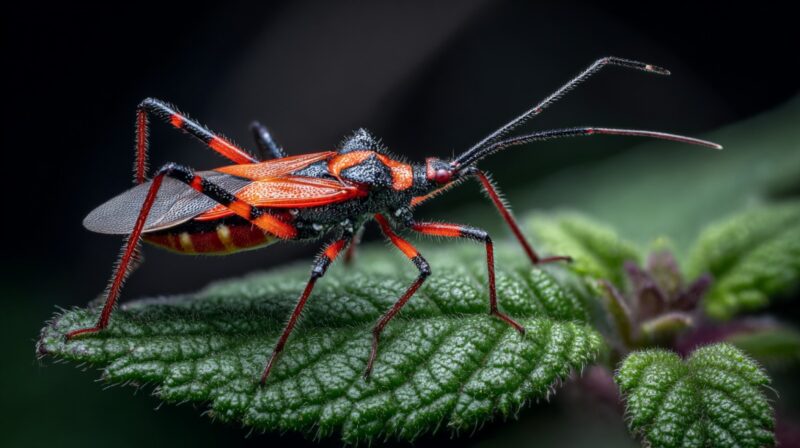
- Region of Origin: Various arid African zones
- Size: 1–4 cm
- Life Duration:: Up to 2 years
- Notable Features: Enzyme injection, corpse camouflage
- Behavior: Nocturnal predator, ambush hunter
Patrolling scrublands and deserts with quiet menace, the assassin bug disables prey not through brute force but chemical warfare. A sharp beak injects digestive fluids that reduce internal organs to a soup it drinks.
Some species decorate themselves with the remains of past kills, creating armor made of corpses. It’s a blend of camouflage and threat display. Even predators hesitate when confronted with such grotesque costuming.
A few, such as the kissing bug, are known blood feeders, sometimes transmitting disease, but this remains rare in African species.
4. Dune Ant (Cataglyphis spp.)
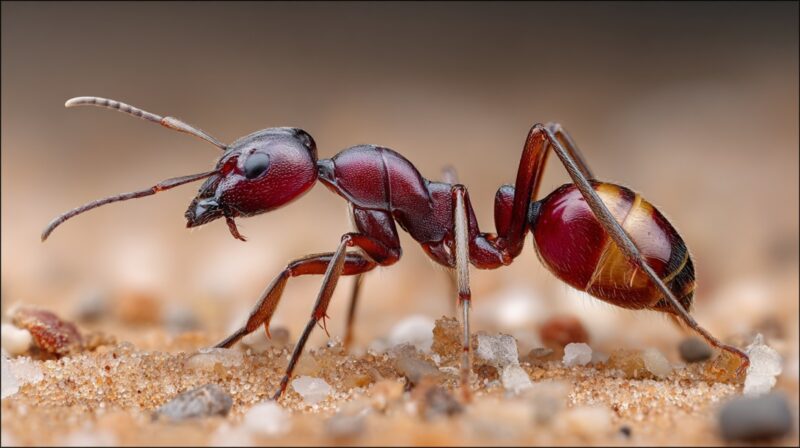
- Region of Origin: Sahara Desert
- Size: 5–12 mm
- Life Duration:: Several months to 1 year
- Notable Features: Heat resistance, navigation via sun
- Behavior: Midday forager, scavenger, colony-based
One of the few living things capable of surviving the highest surface temperatures on Earth, the dune ant treats the burning Sahara like a racetrack. Its body reflects sunlight, and elongated legs elevate it away from searing sand.
Fast foragers with internal pedometers, they calculate distances with each step and rely on solar orientation to return home. If disrupted, they spiral in geometric patterns until familiar cues return.
Foraging missions are brief and intense. Lingering too long above ground means death.
5. Desert Locust (Schistocerca gregaria)
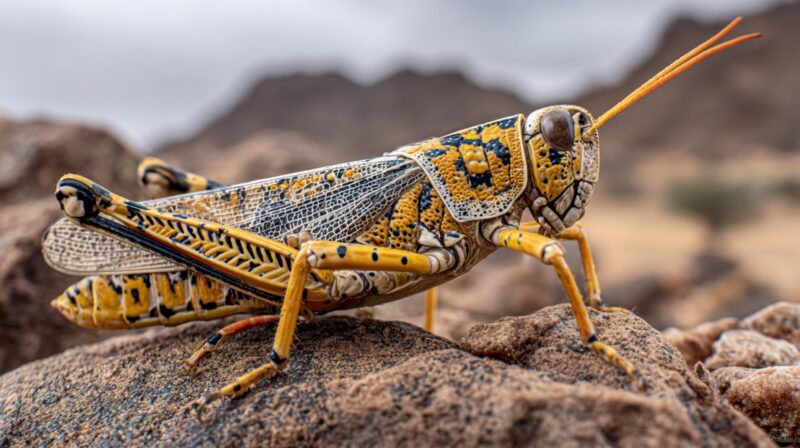
- Region of Origin: Sahel, Horn of Africa
- Size: 4–7.5 cm
- Life Duration:: 3–5 months
- Notable Features: Swarming ability, dual behavioral forms
- Behavior: Migratory herbivore, gregarious in groups
Every few years, dry winds carry more than dust, they bring clouds of desert locusts capable of eating entire fields in hours. Normally solitary, they shift into swarm mode during population booms triggered by environmental shifts.
Wings shimmer as they travel across regions, devouring crops and stripping trees bare. Their impact reaches far into food chains, economies, and migration patterns.
Despite devastation, desert locusts also play a role in rural diets. Packed with protein, they’re harvested in bulk and served fried, dried, or ground into flour.
6. Giant Cricket (Anostostomatidae)
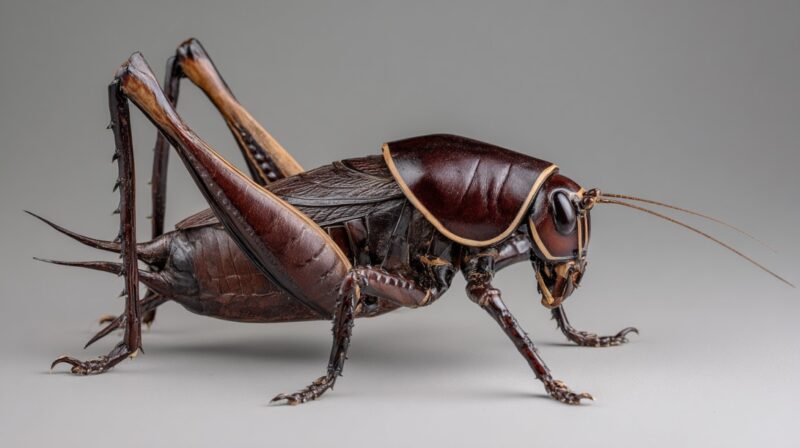
- Region of Origin: Arid savannahs, semi-deserts
- Size: 4–10 cm
- Life Duration:: Up to 1 year
- Notable Features: Cannibalistic, heavy mandibles
- Behavior: Nocturnal scavenger, solitary
Lurking beneath stones and brush, giant crickets of arid Africa rule the night with brute force and intimidating chirps.
Legs covered in spines and jaws fit for a horror movie mark these heavyweight insects.
Cannibalism appears during droughts, often targeting the weak or wounded. Competition is fierce, and bites are not uncommon when space or food becomes scarce.
Their presence benefits desert soils. By feeding on decaying material, they help return nutrients to the earth.
7. Termite (Macrotermes spp.)
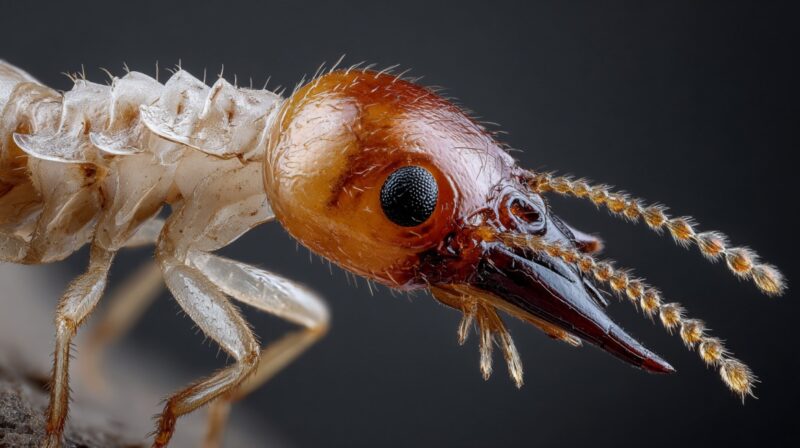
- Region of Origin: Sub-Saharan arid zones
- Size: Workers: 3–5 mm, Queen: up to 10 cm
- Life Duration:: Workers: months, Queen: over 10 years
- Notable Features: Fungus farming, mound architecture
- Behavior: Highly social, colony builders, soil recyclers
Towering mounds break the horizon in dry African plains. Inside, millions of termites operate a social machine fueled by fungus farming and driven by caste systems.
Worker termites gather dry plant matter to feed their underground fungi. Moisture is drawn from deep below, creating a sustainable food cycle.
These insects don’t just survive, they build climate-controlled habitats with natural air vents and humidity regulation.
8. Scorpionfly (Mecoptera)
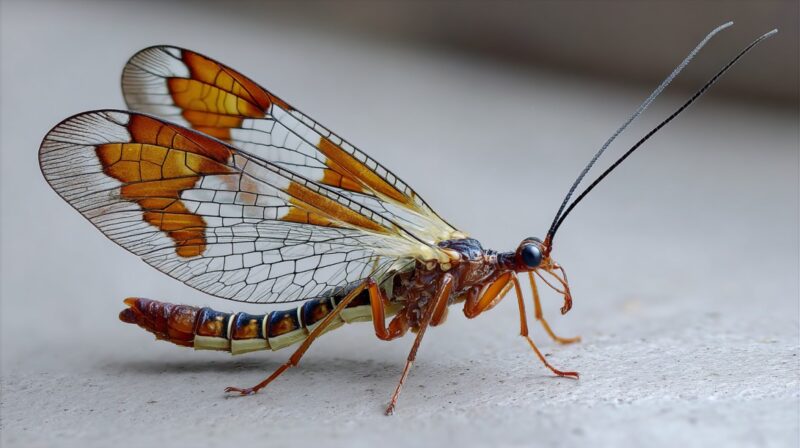
- Region of Origin: Semi-arid African regions
- Size: 1–3 cm
- Life Duration:: Few months
- Notable Features: Tail mimicry, nuptial gifts
- Behavior: Scavenger, fluttery flight, solitary
Scorpionflies appear exotic, with elongated heads and curled tails that mimic a scorpion’s sting. Though harmless, the visual display deters would-be predators.
Males bring gifts to courtship, offering dead insects or nutrient-rich fluids. Rejected gifts mean no mating. Those that please the female continue the line.
Adapted species found in dry zones clean the environment by feeding on dead organic matter.
9. Blister Beetle (Mylabris spp.)
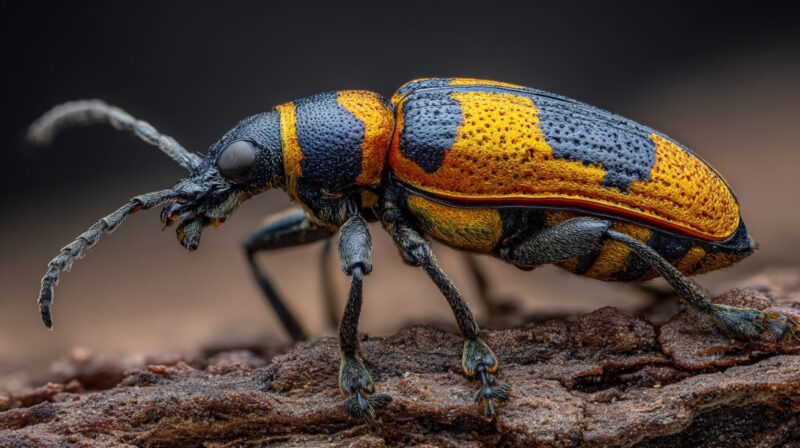
- Region of Origin: Arid African regions
- Size: 1–2.5 cm
- Life Duration:: 6 months
- Notable Features: Cantharidin secretion, warning coloration
- Behavior: Slow-moving, defensive, crop-feeding
With bold colors and toxic defense, blister beetles march slowly across dry ground, armed with cantharidin. Skin contact results in intense blistering—an effective deterrent for most predators.
Traditional medicine once prized their toxin for use in balms or aphrodisiacs, despite its dangers. Today, they’re respected and avoided in equal measure.
Larvae parasitize grasshopper eggs, reducing pest numbers naturally.
10. Cockroach (Polyphaga aegyptiaca)
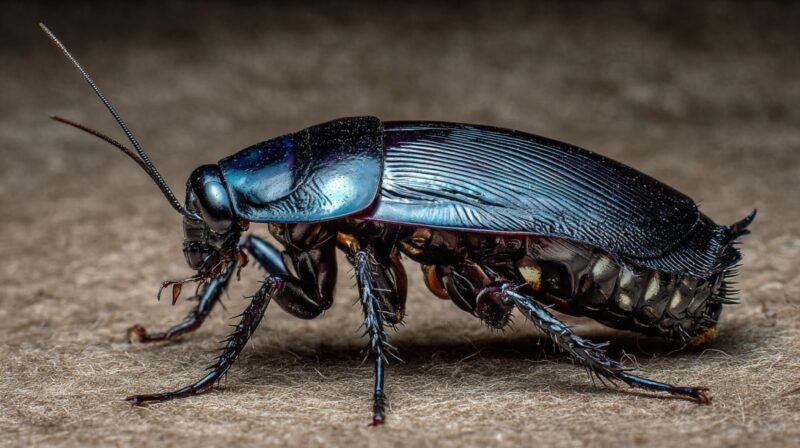
- Region of Origin: African deserts
- Size: 2–3 cm
- Life Duration:: 1–2 years
- Notable Features: Vapor absorption, extreme durability
- Behavior: Nocturnal, scavenger, burrower
Adapted for extremes, desert cockroaches can survive radiation, dehydration, and starvation. Polyphaga aegyptiaca thrives underground during daylight, foraging at night in search of organic debris.
Water is absorbed from vapor, and energy is rationed. Antennae sense even faint chemical trails, guiding them through darkness.
Essential to decomposition, they quietly support nutrient cycles while avoiding attention.
The Bottom Line
Africa’s deserts may seem lifeless to the casual observer, but each grain of sand tells a story of survival, adaptation, and ecological harmony.
Insects, often dismissed as minor creatures, dominate these ecosystems with physical, behavioral, and even chemical innovations.
From mound-building termites to fog-drinking beetles, each species contributes to the functioning of fragile food chains.
They pollinate, decompose, predate, and serve as sustenance. Many also carry cultural relevance, featured in folklore, cuisine, and medicine.
Related Posts:
- Which Insects Can Survive Being Frozen and Reawaken…
- Wildest African Desert Expeditions Captured by YouTubers
- Baobab - The Iconic African Tree That Grows Upside Down
- Top 10 Nocturnal Animals of the African Deserts
- Life in the Namib Desert - Africa's Oldest Desert…
- 6 Unique Plants Found in the Sahara Desert - Rare…



